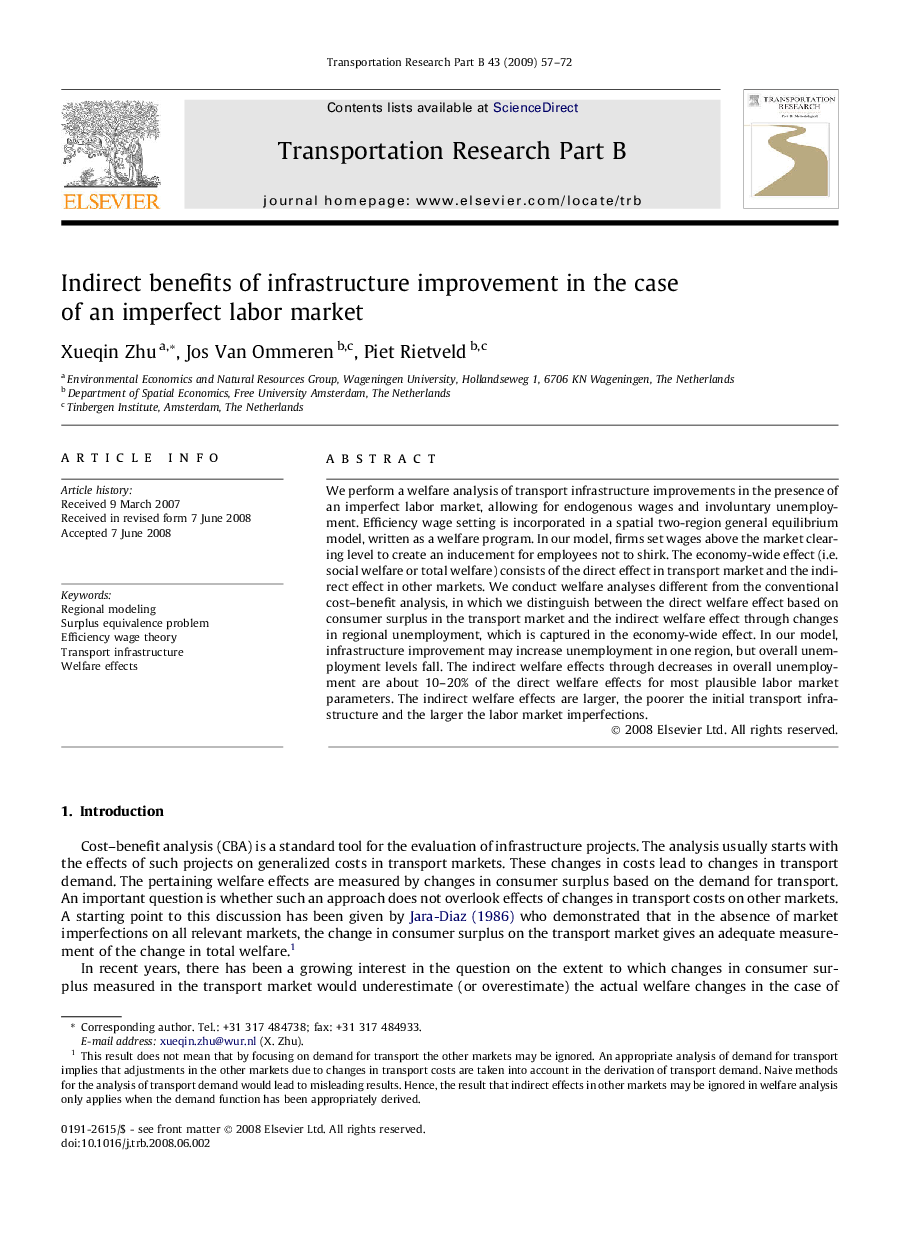| Article ID | Journal | Published Year | Pages | File Type |
|---|---|---|---|---|
| 1132758 | Transportation Research Part B: Methodological | 2009 | 16 Pages |
We perform a welfare analysis of transport infrastructure improvements in the presence of an imperfect labor market, allowing for endogenous wages and involuntary unemployment. Efficiency wage setting is incorporated in a spatial two-region general equilibrium model, written as a welfare program. In our model, firms set wages above the market clearing level to create an inducement for employees not to shirk. The economy-wide effect (i.e. social welfare or total welfare) consists of the direct effect in transport market and the indirect effect in other markets. We conduct welfare analyses different from the conventional cost–benefit analysis, in which we distinguish between the direct welfare effect based on consumer surplus in the transport market and the indirect welfare effect through changes in regional unemployment, which is captured in the economy-wide effect. In our model, infrastructure improvement may increase unemployment in one region, but overall unemployment levels fall. The indirect welfare effects through decreases in overall unemployment are about 10–20% of the direct welfare effects for most plausible labor market parameters. The indirect welfare effects are larger, the poorer the initial transport infrastructure and the larger the labor market imperfections.
